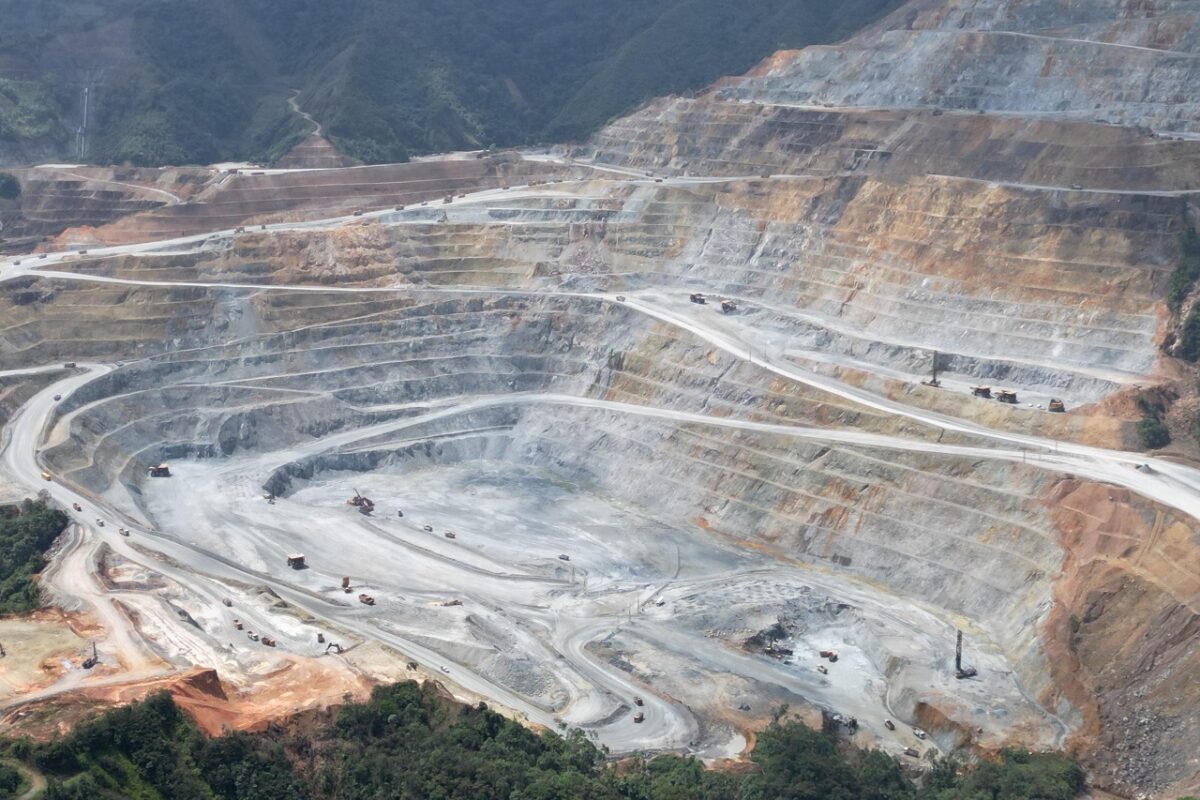Indigenous Shuar communities and local mayors in southern Ecuador have demanded immediate help in light of the “imminent” potential collapse of a massive dam holding mining waste, set in the high rainforest of the Cordillera del Cóndor, a key watershed of rivers in the western Amazon.
The tailings dam is part of one of Ecuador’s biggest mining projects, El Mirador, which holds an estimated 3.2 million metric tons of copper, 3.4 million ounces of gold and 27.1 million ounces of silver.
EcuaCorriente S.A. (ECSA), a subsidiary of the Chinese consortium CRCC-Tongguan, began operating El Mirador in 2019 and has a 30-year concession to exploit the $1.4 billion mine in the Cordillera del Cóndor, a jungle mountain range straddling Ecuador’s Amazon frontier with northern Peru.

In 2012, the government of then-president Rafael Correa signed a contract with ECSA for the mining concession in the southern province of Zamora Chinchipe. Since then, the local Shuar Indigenous people, in Tundayme, have been pushed off their land, which has been deforested, while their three principal rivers, the Quimi, Tundayme and Wawayme, have been polluted by mining waste.
Now the mine is expanding, aiming to boost production fivefold to 140,000 metric tons of ore per day. This calls for doubling the size of the current tailings dam to 260 meters (850 feet) in an earthquake-prone region of the high Amazon, which is considered a watershed.
Given the planned expansion, local leaders say their communities are in imminent danger.
“The Cóndor Mirador mining project in Tundayme implies persecution, dispossession and pollution for the inhabitants,” said Jaime Palomino, leader of the Shuar Arutam people, who said the project was illegal due to lack of prior, informed consent from the communities.
“It threatens life in an area of historical and environmental value. Joint action by the authorities and experts is urgently needed to prevent a landslide of tailings which would mean the extermination of the communities,” he added at a meeting last week.

In 2014, Shuar leader José Tendetza filed a case against El Mirador at the Inter-American Commission on Human Rights. The complaint alleges that the government of Ecuador failed to seek the free, prior and informed consent (FPIC) of the Shuar people to develop El Mirador on their land. Tendetza was killed in 2015 in an attack that remains unsolved.
Richard Kamp, director of E-Tech International, a U.S.-based environmental NGO, said the expansion of both the mine and its tailings dam would turn El Mirador into one of the world’s largest open-pit copper mines, with a risk of a tailings dam collapse that he called “frightening in terms of imminent endangerment to human life downstream and also large-scale river destruction.”
“Based upon the current trajectory of events, the failure of the tailings dams at the Mirador mine is inevitable,” said Steven Emerman, a geophysicist and head of engineering firm Malach Consulting, who has studied the site over several years.
“The consequences will be one of the greatest ecological catastrophes that the world has ever seen,” he added, comparing the possible outcome to that of the Brumadinho disaster; in January 2019, the tailings dam for the Córrego de Feijão iron ore mine in Brumadinho, Brazil, collapsed, swamping the surrounding areas with some 12 million cubic meters (3.2 billion gallons) of mining waste, killing nearly 300 people.
Computer modeling commissioned by E-Tech shows that earthquakes, heavy rains and structural weaknesses could trigger the collapse of the tailings dams at El Mirador. This would cause catastrophic landslides up to 30 m (100 ft) high along the Quimi River to where it meets the Zamora River, leading to massive loss of life and property, and contamination of rivers far downstream.

Emerman noted in a series of reports that, given the current design of El Mirador’s tailings dam, the only barrier protecting the environment from the mine’s toxic waste isn’t adequate for the area’s earthquake-prone and rainy natural conditions.
“This generates a probability of failure so high that it is imminent,” Emerman told Mongabay.
“It is a serious and imminent threat of around 100 million tons of highly toxic waste which will be discharged directly into the surrounding rivers,” he said, adding the situation has worsened since the Ecuadorian government approved the mine’s expansion.
“Every time that I think that the situation could not possibly get worse, somehow it manages to get worse,” he added.
Banner image: El Mirador mine. Image by David Chambers.
FEEDBACK: Use this form to send a message to the author of this post. If you want to post a public comment, you can do that at the bottom of the page.
